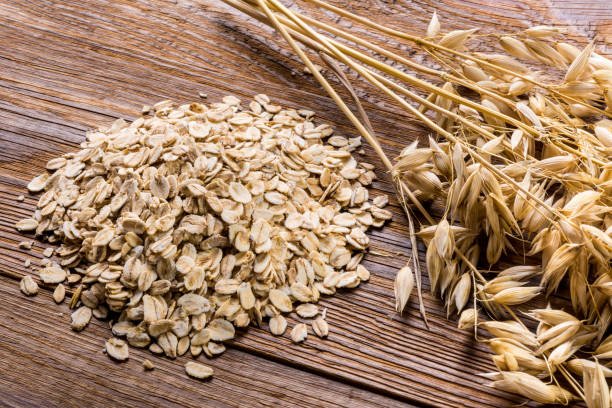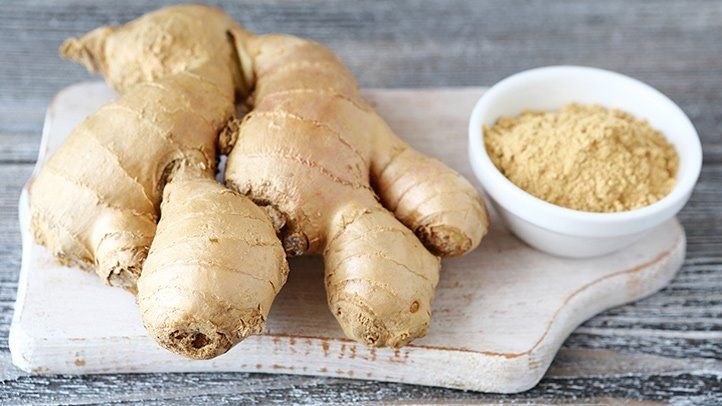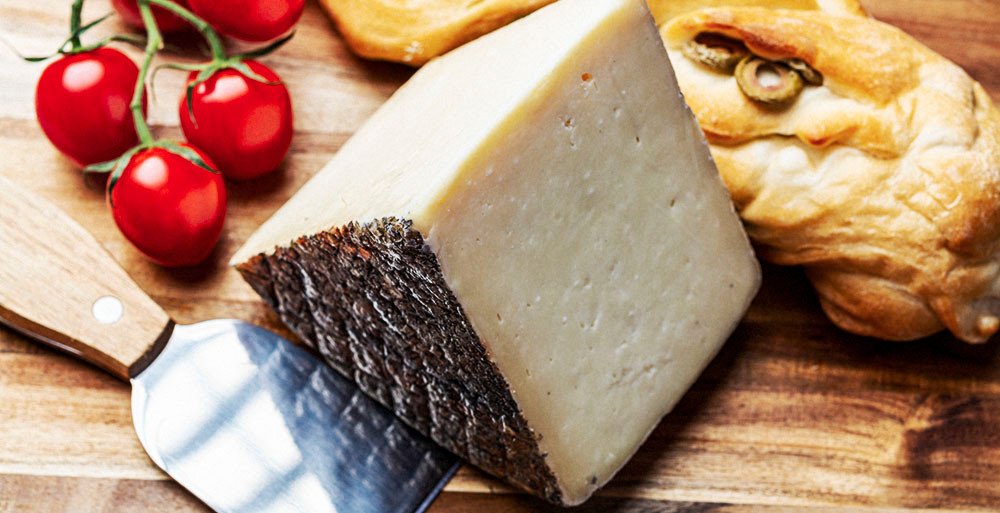The wheat bran is a byproduct of the wheat milling process. Wheat bran is a fiber supplement that is added to food. It can be used in muffins and rolls, bread, pancakes, and smoothies. Wheat bran can also be mixed with breadcrumbs or its alternatives to coat chicken and fish.
It’s a great source of dietary fiber and contains more than whole wheat flour and wheat germ. The high fiber content of wheat bran contributes to a healthier digestive system and better overall health. Wheat bran is not cheap. Because of its low nutritional content, it can be difficult to get daily nutrients like calcium and zinc.

Alternatives and Substitutes For Wheat Bran
Gluten-sensitive people should not consume wheat bran. It doesn’t matter if you are gluten sensitive. Here are the top wheat bran alternatives.
Flaxseed
Flaxseed is a great choice if you look for something healthy to replace gluten in your diet. Flaxseeds come in two colors: yellow and brown. Flaxseeds can be crushed in food to reap health benefits. Flax is one of the oldest crops to have been cultivated. It has the same flavor profile and (more importantly) the nutrient profile of wheat bran to be used as an alternative. You can use the food processor to blend whole flaxseed for picky eaters.
Flaxseeds are a natural way to improve your health. A tablespoon of flax seeds will provide you with 3 grams of fiber, which is between 8 and 12 percent of your daily recommended intake. Flaxseeds naturally lower blood sugar due to their fiber structure.
They are good for vegetarians and people who don’t eat fish. Flaxseeds are rich in omega-3 fats and contain a lot of protein, fatty acid, and other vitamins minerals. Flaxseeds are a great substitute for wheat bran if you want to increase the variety in your diet. People use flaxseeds in many recipes.
Flax is a great source of dietary fibers. This fiber significantly lowers blood pressure and cholesterol. They are most often used in bread and baked goods. You can also add them to oatmeal or mix them with water to drink. These seeds can be added to salads and used as thickening agents in soups.
Flaxseeds such as rye bran or rice bran may have many calories. These calories are still healthy. As a substitute for healthy, gluten-free wheat bran, you can use the same amount of milled flaxseed. We may use them to make muffins, wraps, cakes, cookies, healthy smoothies, puddings, and casseroles. They can also enhance the flavour of the food.

Rice Bran
This is a less popular alternative to wheat bran. It is very useful, even though it has a lower fiber content. They taste great when combined with cereals. They are similar to wheat bran and contain vital nutrients such as calcium which helps prevent kidney stones.
A powerful cholesterol control agent that is rice bran, is also available. Rice bran, which is a byproduct of the milling of rice kernels, is nutritiously rich. It is rich in protein, fat, dietary fiber, and minerals such as potassium, calcium, and magnesium. It is also rich in antioxidants, which help to regulate immune health.
It is similar to wheat bran and can increase fiber content in foods. It is an excellent and more flavorful alternative to wheat bran. This is especially true if you have a gluten allergy. Although this method is quite inexpensive, it creates wheat bran substitute wheat fiber with a low wheat protein.
The outer layer of rice bran is used to make oil. It tastes good and can be enjoyed with cereals. The oil made from it is also very popular in India and Japan. Rice bran is good for lowering cholesterol. It is a great alternative to wheat bran because it contains calcium.
Because of its high-fat content is used more often to make oil in Asian countries such as India and Japan. Japan was the first country to use it in baked goods, especially the Kome Nuka cookies. Many people are now including it in their diets due to its many health benefits (proven for treating diabetes, controlling blood pressure, reverse drinking, and other reasons). It is rich in vitamin E, making it an antioxidant that aid in the production of white blood cells.
Rice bran is also known to improve brain function, increasing blood circulation and oxygen flow. Rice bran can go in many different dishes. It is important to remember that rice bran has high calories.

Oatmeal
This is a healthy option for breakfast and can make a variety of sweet and savory dishes. Groats are the best choice after bran, but any oatmeal product (quick, steel-cut, or rolled) can be used in its place. This is also the most convenient option, as it’s a frequent purchase for your pantry. Oatmeal can help lower cholesterol and fight heart disease. It is rich in vitamin B, E, and magnesium. It is gluten-free, which is the most important aspect.
It is easy to use and can be a part of your daily routine. Oatmeal is larger, so you might not get the right consistency and texture. You can also blitz the mixture in a blender, food processor, or normal blender if you are not satisfied with the texture. Oats can be prepared as a whole-grain meal, but they take much preparation time.
You can also use other forms, which are equally delicious and easy to prepare. There are many other forms of steel-cut, crushed, and rolled oats. Oatmeal is a nutritious cereal, as it is made from oats.
This whole-grain powerhouse has plenty of nutrients and a delicious flavor. It is one of few comfort foods that can be delicious and beneficial. Oatmeal can be used as a substitute for the wheat bran in some dishes, as it has a bland and earthy flavor.
You can substitute it in different sweet or savory recipes to improve the texture and consistency. Oatmeal can be mixed with dried fruits and nuts or baked as a casserole. It can be added to eggs or made into a thick oatmeal-tamari dip.

Cornmeal
Cornmeal is high in fiber which lowers LDL cholesterol and helps control blood sugar. You can use cornmeal in many dishes, for example, to make muffins, bread, soups, etc. You can also substitute flour for it in your waffles and pancakes.
Cornmeal is not gluten-free, so don’t use it if you have celiac. Some people might also be allergic to corn. Before using this substitute, it is important to consult your doctor.

Oat Bran
This is the outer layer of oats after the inedible outer shell has been removed, just like wheat. It’s also used extensively in baking. This oat product contains 14 grams of fiber per serving, compared to our featured ingredient, nearly 25 grams.
Weight watchers tend to eat more of the latter. If you don’t want to eat many calories, this alternative is great because it’s just as healthy. Oat bran is rich in soluble fiber, which lowers LDL cholesterol and improves the feeling of fullness. This works best when mixed with fiber types like pectin and guar gum.
Oat bran has more calories than wheat bran. It is also richer in fiber has higher levels of protein, fat, and carbohydrates. You can make muffins or bread with oat bran. If you are looking for a substitute, choose one made with 100% whole grain oatmeal.
Make sure to read the label carefully to ensure it doesn’t contain any sugar or other additives. This fiber absorbs more water and forms a gel inside your digestive tract. About 17% of oatmeal bran comprises soluble fiber (also known as beta-glucan). It helps keep your heart healthy.
Both wheat and oat bran contain B-complex vitamins that can be used to help your body produce energy. Both contain similar mineral content, which provides nearly all your daily calcium- and magnesium requirements. Both have 5-6 mg iron.
Both are low in antioxidant vitamins and contain phytochemicals with antioxidant properties. Oat bran is creamy and almost sweet. It has a pleasant flavor that doesn’t need any sweeteners.
It comes from the wheat milling process. Oat bran is a great substitute for gluten in bread baking. Mixing oat bran and flour will cause your bread to not rise. It can be used to make delicious waffles and pancakes.

Whole-wheat flour
This flour is made from whole grains but retains many vitamins, minerals, and fiber. This flour is mostly used for baking or thickening dishes. Due to its higher fiber content, it has a stronger flavor. However, you will need to add more water to make it work.
White flour is usually made from wheat flour. You will need to tweak your recipe so it doesn’t go wrong, especially if you make bread or cakes that require precise measurements. This flour is used mainly in baking and chicken dishes
Whole-wheat flour has a higher nutritional value than white flour. It preserves both wheat germ and wheat bran. It contains a concentrated amount of what you need. Whole wheat flour is lighter and has a nuttier texture than white flour.
It can be substituted for wheat bran in baking or cooking. Because of its fibrous texture, wheat flour can add extra flavor to sweet and savory dishes. Wheat bran can substitute whole wheat flour for bread, muffins, and pancakes.
Whole wheat flour is the main ingredient in bread and other baked goods. If the person can tolerate gluten, it may be substituted for wheat bran. You can replace up to 1/3 of whole-grain flour in recipes that use wheat bran as a nutritional punch. It can be used in muffins, bread, and pancakes. It has a strong flavor because of its high fiber content.

Rye Bran
Rye bran contains magnesium and selenium, and our body uses both as an antioxidant. It can also increase thyroid function, which aids in weight loss. These substitutions make it easy to include rye bran in your diet. Avoid any added sugars or other additives that could lower their value. It is important to remember that rye bran has high fat. However, it is still considered a healthy fat. Fiber is the main benefit, as it lowers cholesterol and regulates blood sugar.
Rye flour is slightly milky and has a mild, tangy, and nutty taste. When we use rye flour in baking as a substitute for wheat bran, it transforms the flavor and taste of baked goods from bland to nutty. Rye flour can be a great addition to the dough because it has a strong and rich flavor.
Selin is a gluten protein found in rye flour. If you have gluten intolerance, rye should not be consumed. Pumpernickel bread is a yeast-leavened bread made with the darkest rye flour. It is perhaps the most famous rye flour product.

Quinoa Flour
Quinoa flour is the last substitution for wheat bran that we’ll be discussing today. It’s easy to source, but it ranks low on the fiber scale, with only 6.6g per cup. Even though it is low in fiber, it can be included in most meals, and pancakes are favorites.
It’s almost impossible to find gluten-free pancakes with a delicious texture that doesn’t crumble but still tastes great. Quinoa flour is the answer! It’s a very earthy, nutty flavor that makes fluffy pancakes. Pancakes are one of the most versatile meals you can find. It can be used for breakfast, lunch, or dinner.

Frequently Asked Questions about wheat bran
What kind of fiber is found in wheat bran?
Soluble fiber can be found in nuts, seeds and beans, legumes, peas, and fruits and vegetables. It is also found in psyllium as a standard fiber supplement. Certain forms of soluble fiber may help lower the risk of developing coronary heart disease. Insoluble fiber can be found in whole grains, wheat bran, greens, and whole grains.
Is Oatbran gluten-free?
Oat Bran and other oat products are considered naturally gluten-free.
Is wheat bran the same as bran?
Bran is the outer layer of cereal grains, such as wheat, corn, oats, and barley.


We are baking experts and connoisseur of food with decades of cooking experience to cook and bake a variety of scrumptious food item to awaken the taste buds of people who eat our baked delights.
With our gumption, alacrity along with astute acumen to pick the authentic and best quality ingredients from across the world to make the scrumptious recipes which soothes the taste buds of eater has made him the name on which people can count on when it comes to cooking advice, world class meals and cuisines native to the different cities of world.
Our chefs unique ability improvise and make baked dishes with different raw produce and ingredients in less time which are delicious and relished by the guests has made kooky bakes leader in the arena of baking and serving mouth watering food.

